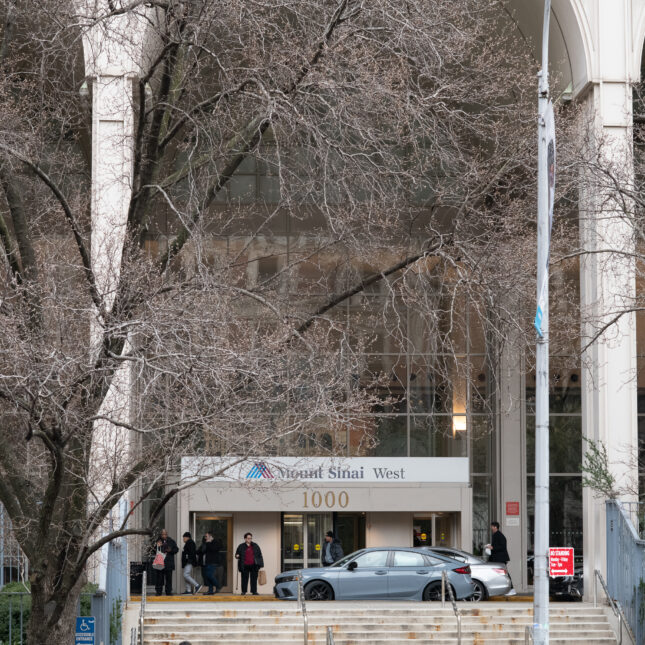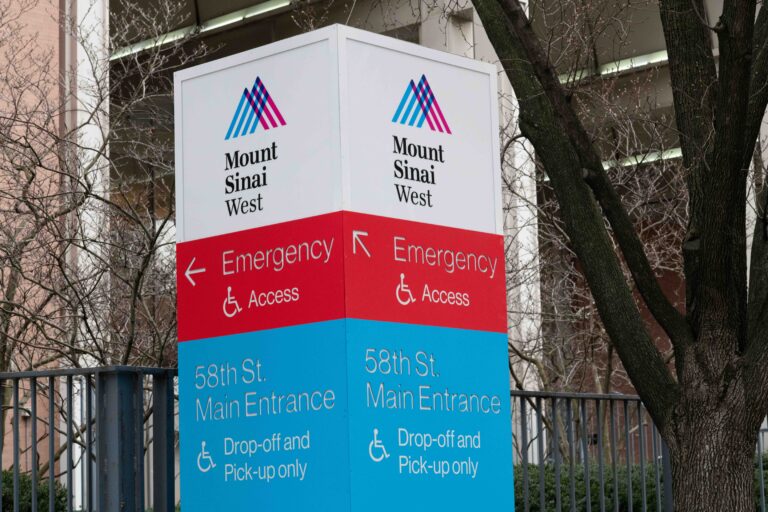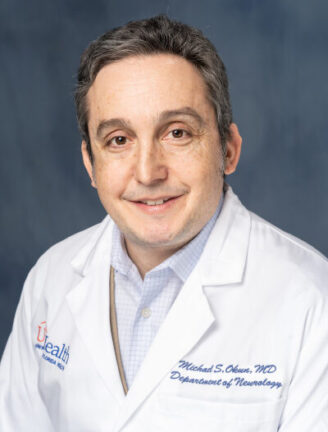
Mount Sinai, a leading hospital network in New York City, has mounted an extraordinary behind-the-scenes campaign to blunt the fallout over revelations about its controversial research project in which brain biopsies are taken from patients undergoing deep brain stimulation, STAT has learned. That has included not only enlisting its own patients to defend the research but also seeking to stop a professional society of neurosurgeons from issuing a statement that could have jeopardized the research.
The campaign began after a STAT investigation disclosed that a Food and Drug Administration review concluded that Mount Sinai researchers were misleading patients and using a false justification to obtain the biopsies.
Mount Sinai researchers had claimed, in a patient consent form and in documents submitted to the FDA and the National Institutes of Health, that patients in the study do not lose any additional tissue than they would during standard DBS, a procedure used to ease the symptoms of certain neurological conditions. But a number of neurosurgeons consulted by both the FDA and STAT disputed that claim.
Mount Sinai’s far-reaching efforts to defend its study, the Living Brain Project, included collecting statements from patients who effusively praised their medical care and objected to how they were quoted or described by STAT, despite the fact that they had confirmed those characterizations in interviews prior to publication. One of the patients Mount Sinai contacted, Peter Bauman, told STAT that the study’s lead neurosurgeon, Brian Kopell, prodded him to help seek a retraction and that he was “really freaked out” by the exchange. As he recalled thinking, “I’m just wondering why he was really so worried about it if he didn’t do something wrong.”
Then, in early June, Mount Sinai attempted to quiet fallout from STAT’s reporting at the biennial meeting of the American Society for Stereotactic and Functional Neurosurgery (ASSFN), a premier professional society for neurosurgeons who treat movement-related and other quality-of-life disorders.
As the group’s members gathered in Nashville, its board of directors deliberated on whether to issue a statement about the Living Brain Project disclosures that would specify that standard DBS does not routinely involve removal of brain tissue, according to several sources who learned of the discussions. The statement threatened to undercut Mount Sinai’s justification for the study.
The board members were unified in agreeing that DBS — in which an electrode connected to an external battery is inserted into the brain and emits electrical impulses — does not involve the intentional removal of tissue, said the sources, who like others spoke on condition of anonymity. But the board’s discussions were influenced by the belief that Mount Sinai had made “very thinly veiled” threats of legal action against the group if it released a statement that was harmful to the research study, as one of the sources put it.
“The implication was, ASSFN couldn’t afford the lawyers to fight Sinai,” said another of the sources.
ASSFN did not issue a statement. The group’s officers did not respond to requests for comment, and it was not clear whether a threat of litigation was made explicitly or implicitly.
In a statement to STAT, a Mount Sinai spokesperson said reports that it had threatened legal action were “false,” adding, “We question how you arrived at … any of these statements regarding the ASSFN meeting given that it is a closed meeting and its content confidential.”
Regarding outreach to patients, the spokesperson said, “As caregivers, it is our obligation to follow-up with our patients to ensure their wellbeing.”
Medical ethicists told STAT that it is highly unusual for any physician to contact patients to press for a public endorsement or denunciation of a media story. R. Alta Charo, professor emerita of law and bioethics at the University of Wisconsin at Madison, said of Mount Sinai’s outreach to its patients: “The doctor-patient relationship is one intrinsically of a power imbalance. You want to do everything you can to avoid exacerbating that problem. So it is absolutely not ideal for somebody who is still actively treating the patient to be asking the patient for anything that is not for their medical benefit.”
The Living Brain Project is co-led by Kopell and Alexander Charney, son of the long-standing dean of Mount Sinai’s medical school, Dennis Charney. In 2013, when the study first began, Dennis Charney was also listed as one of the study’s personnel.
The biopsies, among the first of their kind to be done in the U.S., are a centerpiece of the Living Brain Project, which aims to be the largest-ever molecular study of the living human brain. Since its inception, the LBP has collected over 600 samples of brain tissue from living patients, and in 2020 received a $3.5 million NIH grant, which enabled the study to expand to a second site, at Rush Medical Center in Chicago.
The study protocol says that, during deep brain stimulation, researchers may take two biopsies of up to one cubic centimeter each from the left and right sides of a patient’s brain. The patient consent form specifies that the amount of tissue lost “will be no different” than in standard DBS due to the cauterization of tissue. Mount Sinai has subsequently said that, in practice, the average biopsy is much smaller and amounts to roughly 0.04 cubic centimeters. STAT did not find evidence that patients were harmed by the biopsies.
STAT’s investigation has set off a debate within the neurosurgical community about patient consent, and how to ethically pursue sensitive brain research that provides no therapeutic benefit. It has also prompted concern that the controversy itself could chill further research, which must already meet a high bar for approval.
Shortly after the original story was published, Michael Okun, director of the Norman Fixel Institute for Neurological Diseases at the University of Florida Health, and a leader in the field, declared on the social platform X that the revelations should “set off the alarm bells for how we can improve our processes to both protect people with diseases and also provide data for research.” He later told STAT that for physicians whose patients say, “‘Take a piece of my brain, sign me up, I will do anything,’ part of our job is to protect people from themselves.”
The Mount Sinai spokesperson told STAT, “We are very proud of the Living Brain Project and the transformational advances it promises for brain health and will continue to promote its excellence and accomplishments.”
For this story, STAT spoke to over a dozen leading physicians, researchers and ethicists within the neuroscience field. A number who requested anonymity cited a fear of retribution from Mount Sinai as the reason to withhold their names.

An unexpected call
Mount Sinai’s efforts to discredit STAT’s story began immediately after its publication on May 1 when it started reaching out that day to all five patients quoted in the story.
Bauman, who got DBS to treat his Parkinson’s disease and agreed to undergo the brain biopsy, said he got an abrupt phone call from his neurosurgeon, Kopell. He said hearing directly from Kopell “blowed me right over.” As he put it, he typically “can’t get anyone to call me back” from Mount Sinai, let alone a top surgeon. But the reason for the call was even more surprising.
Kopell had an ask: Would Bauman be willing to write an email, saying that what he’d been quoted as saying in STAT’s story was false, and “that I was sort of pressured by you guys, cornered,” as Bauman recounted.
“He didn’t really tell me exactly what to say,” Bauman added. “But he sort of coached it a little, you know, ‘to mention how they sort of pressured you or something.’”
STAT had previously quoted Bauman as saying that, at the time he agreed to undergo a biopsy, in 2020, he would have consented to almost anything, and that he had lingering questions over the biopsy’s impact on his health.
Bauman said he was troubled by Kopell’s call and did not write the requested email. He has since moved to Florida and is no longer solely dependent on Mount Sinai for his care.
The day after the story ran, a Mount Sinai spokesperson contacted STAT, demanding alterations to, or a complete retraction of, the story. Alleging “deception,” the spokesperson proffered emails from four other patients quoted in the story. “Each of them was appalled at STAT’s misrepresentations of their respective statements and wanted to set the record straight,” the spokesperson asserted recently.
While three of the five patients in the initial story voiced their support for Kopell, only two disputed how they had been characterized or quoted. Prior to publication, STAT had reviewed the story’s contents with each of the patients, and obtained approval to use their quotes. Text messages exchanged with STAT reveal that one of the patients forwarded his email to Mount Sinai, defending the research study, before having even read STAT’s article.

A debate over consent
The LBP’s research documents characterize the brain biopsies as largely inconsequential for patients.
The consent form states “no evidence has arisen suggesting that the loss of this brain tissue affects the function of the individual in any measurable way.” In addition to emphasizing that the amount of tissue lost “will be no different” than standard DBS, it says there is “minimal increased risk” of brain bleeding, seizures, or infection.
The LBP’s study protocol also describes the lost tissue as “trivial” and asserts that it is “non-eloquent” — unrelated to patient function — because it comes from the dorsolateral prefrontal cortex.
Those characterizations — as well as the specification that Kopell and Alexander Charney be the only ones to obtain informed consent from patients — add up to an unethical consent process and study justification, according to several medical ethicists interviewed by STAT.
The cornerstone of informed consent is allowing patients to “exercise their right of refusal” by providing them with full information about “the benefits, the relative risks, and the definable harms” of any given procedure, said James Giordano, professor of neurology and a neuroethicist at Georgetown University Medical Center. In that process, the physician must exercise “intellectual honesty, which means admitting what you don’t know.”
The brain biopsies open patients to multiple unknowns, he said, which include the impact of removing brain tissue from patients suffering from disease and how the removal of that tissue could impact the effectiveness of the DBS treatment they’re seeking.

The claim that tissue is “non-eloquent” is “patently false or wholly a misrepresentation,” said Giordano, who reviewed LBP study documents at STAT’s request. That terminology “hasn’t been used in decades. We’ve moved beyond thinking an area of the brain is irrelevant. The brain is a networked system and we do not fully understand how those networks” contribute to patient function.
“There is absolutely nothing wrong with proceeding with a biopsy,” he added, so long as the consent form states, “‘We want to take some tissue out of your brain, but we have no idea what the effect of taking that tissue would be.’”
Giordano and other ethicists also pointed to the potentially coercive effect of having the patients’ neurosurgeon be the one to seek research consent. The Mount Sinai spokesperson told STAT that its institutional review board had stipulated that as one of the lead researchers, Kopell, who is also the neurosurgeon doing the biopsy, “is uniquely suited to explain the research” and get consent. But that structure leads to a “dual loyalty problem,” said Arthur Caplan, founding head of the Division of Medical Ethics at the NYU Grossman School of Medicine’s Department of Population Health.
Patients are “poised to not want to offend their doctors,” said Caplan, and are “often confused, because they think everything the [doctor] does is therapeutic.” But when doctors are acting as both healers and researchers, “you’ve got to be very careful ethically to distinguish the roles, and allow [patients] more time to make research decisions than they would therapeutic ones.”
Patients interviewed by STAT spoke of a hasty consent process, as well as a built-in power imbalance. Richard Navin, 52, a Parkinson’s patient who says he underwent his first biopsy with Kopell in March of 2019, said Kopell was “phenomenal” and “changed my life, literally.” However, he acknowledged that his consent for the research study took place in the pre-operative room: “I signed it right there before surgery,” he said.
Another patient, who spoke on condition of anonymity, said of her interaction with Kopell, “I wanted him to like me. There are just not that many surgeons who do these procedures. You are so vulnerable.” As she characterized her thinking, “‘Please like me as a person so you can do the best job you can.’”
One possible reform, said Okun, the University of Florida neurologist, would be “to create a safe space away from the treating clinician to allow the patient to decide on a non-therapeutic biopsy and lessen the possibility of any coercion.”
Said Giordano: “Ethically, the protocol [of the Living Brain Project] fails. To my view, this is unethical consent.”
The Mount Sinai spokesperson said that the “additional risks of the tissue removal were understood by the IRB when the project was approved and the consent form adequately describes the risks, known and unknown.”

‘Full steam ahead’
On the evening of May 1, Alexander Charney sent out a message on an internal Mount Sinai Slack channel, calling the STAT article an “insincere, incoherent and unethical piece of writing.”
He added that in the coming months, he would be organizing a forum for critics of the LBP to “debate me in the public arena. Full steam ahead to the many of you working on the LBP — let’s double down and think bigger and bolder than ever!”
By May 16, Mount Sinai posted an updated webpage about the Living Brain Project, which provided more detail about the study and its goals.
That same day, the director of Mount Sinai’s Friedman Brain Institute, Eric Nestler, who is also dean for academic affairs at Mount Sinai’s Icahn School of Medicine, tweeted that Mount Sinai was “proud of the innovative work of the Living Brain Project and its research team.”
But the study still faced questions.
As the ASSFN’s board of directors met in Nashville, they debated releasing the statement that would define the DBS procedure as one that does not involve brain tissue removal. “There are a couple hundred people in the country who know that for a fact,” said one of the sources who learned of the discussions. STAT’s earlier story quoted one neurosurgeon who said Mount Sinai’s contention that patients in the LBP were losing no more tissue than patients in standard DBS is a “very gray area.”
Those involved in the deliberations were weighing a number of competing concerns, according to several sources: that drawing more attention to possible ethical concerns about the study could chill research; that, in the closely intertwined neurosurgery community, angering Mount Sinai could endanger ongoing or future collaborations; and that the group itself was not an investigative body, and was not in a position to police the field.
On June 1, the board of directors met on a video conference with Joshua Bederson, Mount Sinai’s chairman of neurosurgery. Though Bederson is not a principal researcher with the Living Brain Project, he was listed as one of four members of its data safety monitoring board in study documents from 2022. The DSMB members are appointed by the principal investigators to help review study data and ensure patient safety.
Bederson told the group of roughly 10 ASSFN officers that Mount Sinai’s institutional review board had approved the study, and the FDA had never told the medical center not to pursue it. Then he showed a graph called a histogram, depicting biopsy sizes from the study as averaging 0.04 cubic centimeters.
A separate Mount Sinai study, which was posted in April 2023 but which had not yet been peer-reviewed, included a photograph of brain tissue from an LBP biopsy, which appeared to be roughly one centimeter in length, based on an accompanying ruler. The preprint, based on 275 biopsies collected from living patients, described it as “representative of the samples studied in this report.”
Ultimately, the board did not even arrive at a draft statement, due in part to concerns that Mount Sinai was threatening the group with litigation. A number of the board’s members viewed the perceived threat as inappropriate, said several of the sources, but noted that it had the intended effect.
A scientist who attended the ASSFN meeting and learned of the deliberations told STAT, “I was disappointed the society didn’t make a public statement. With something as important as this, it’s about public trust. That was a failed opportunity.”
To submit a correction request, please visit our Contact Us page.




